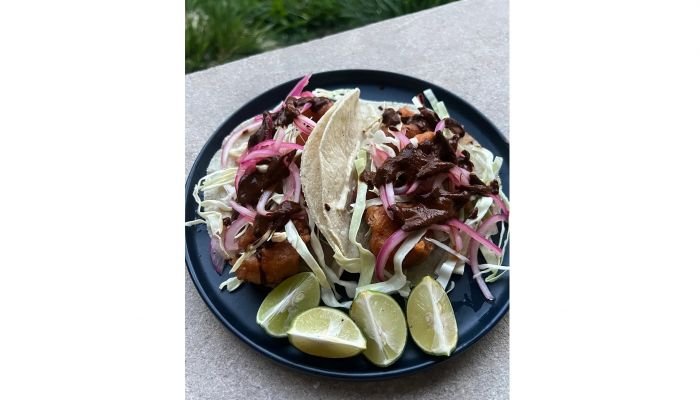
As a child in Sonora, Mexico, Marissa Gencarelli took good tortillas for granted. She didn’t have to make them at home – there were tortillerias on almost every corner passing fresh flour and corn tortillas through an open window.
But when she moved to Kansas City, Missouri, with her husband, Mark, she found a void. The city had plenty of tortillerias, but few were using heirloom nixtamal – corn steeped in an alkaline solution that unlocks more of the corn’s flavour and nutrients (the nixtamalisation process dates back to ancient Mesoamerica). Even fewer were making the thin, chewy, Sonoran-style flour tortillas she craved. If Marissa wanted a tortilla that reminded her of home, she was going to have to make her own.
And she did. The Gencarellis started feverishly testing recipes in their home kitchen, punctuated by some time in her hometown of Obregón training under her friend Enrique Rodriguez, who ran a tortilleria next to the Guadalupe church. The hard work paid off. In 2017, the Gencarellis launched Yoli Tortilleria in Kansas City. And this past June, Yoli won the James Beard Foundation’s coveted “Outstanding Bakery” award – the first tortilleria ever to win the national award.
The James Beard award was also an important recognition of the work they’ve already done to teach Americans how to think about the tacos on their plate. The void of great tortillas in Kansas City may have presented a business opportunity, but it was also, Marissa said, “a huge mountain to climb”.
“Really challenging,” Mark agreed. “More than we ever anticipated.”
The challenge? Consumers in Kansas City were used to cheap commodity tortillas – the sweet, stick-to-your-teeth variety laced with additives to soften them and extend their shelf life. The Gencarellis knew they were going to have to essentially create a market for what (then) seemed like a specialty product. They started offering “tortilla tastings” at a suburban farmer’s market to introduce customers to the flavour and to different types of corn.
They also were careful to instruct both chefs and home cooks on how to cook with their tortillas. “You have to do high heat, fast,” Marissa said. “If you have a tortilla that has a lot of softeners and additives, you can just put it on the griddle and it can be there for a long time without getting hard. With a nixtamal tortilla, you have to go fast.”
In the early days of the business, the Gencarellis would wake up at 03:00 to nixtamalise corn or press the tortillas before heading to their full-time corporate day jobs. Now, they’re all in: they run an expansive (and expanding) manufacturing facility, operate a cosy retail store in a historically Latino neighbourhood of Kansas City, and manage about 15 employees.
Visit the retail store today and you’re likely to be offered a blistered Sonoran-style flour tortilla, hot off the griddle, to eat while you shop. That’s the style of tortilla most associated with Sonora, a northern Mexican state with robust wheat production – and, accordingly, a preference for flour over corn. But there’s room for both types in the state, in Marissa’s shop and in northern Mexican cuisine. One of Marissa’s favourite roadside meals growing up in Obregón, she said, was a shrimp breakfast taco served on a fresh white corn tortilla.
Although the flavours are appropriate for any time of day, Marissa considers it a breakfast taco in part because the tacos would sell out long before the lunch crowds arrived. She and her father – a boxer-turned-lawyer with a hearty appetite – would try to visit a particular bicycle vendor as soon as he set up shop at 09:00.
“There was no official carreta [cart] like some of the corner taqueros [taco sellers] have,” she said. “This guy literally had buckets of shrimp hanging out of his bike and then a metal trash can contraption filled with oil where he would fry the shrimp over a wood fire.”
That particular taquero is no longer peddling shrimp in Obregón. But his tacos were the last meal Marissa shared with her father before his death in a car accident, making the dish even more poignant and urgent for her to preserve.
Marissa’s version of the taquero’s recipe stays true to the key elements – golden brown fried shrimp, crisp confetti strips of cabbage, bright pickled onions and a nutty salsa marisquera negra (black seafood salsa) to dot on top.
“It holds a lot of meaning to me,” she said. “I had to recreate it.”
 Weekly Bangla Mirror | Bangla Mirror, Bangladeshi news in UK, bangla mirror news
Weekly Bangla Mirror | Bangla Mirror, Bangladeshi news in UK, bangla mirror news







